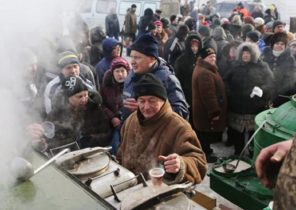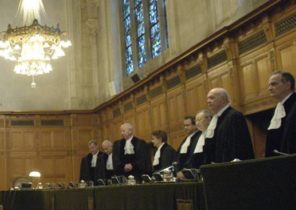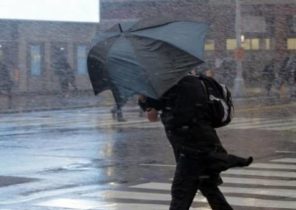
Lisa Wade is a Professor of sociology, University of Occidental College and the author of “promiscuity in America: New culture of sex on campus” (American Hookup: The New Culture of Sex on Campus).
The demographic shift in the late 18th century meant that social interaction took precedence over training.
Thanks to all the possible influences from pop culture to the promotion of higher educational institutions, coming today in the campuses students with different levels of interests and concerns — expecting, in fact, be able to have a good time. Many expect, as cautiously says one of the heroines of the book “promiscuity in America”, “large and continuing four years Orgy”. “Like most people — she said, — I thought that learning at University is like a crazy sexy party, and therefore, to meet this life, you need to use alcohol, pot and sex”.
Today, all based on the fact that the University is a pleasure, part of which is sex. “Best years of your life” — here’s how to formulate their attitude another student. “The pleasure has priority over the sleep and rest,” she said, forgetting to even mention the learning process. If you think it is a very strange idea about the school, the purpose of which is training.
How higher education institutions have turned into pure pleasure? And how promiscuous sex, among other things, has become synonymous with higher education? In order to understand this, we need to go back at least 300 years ago, at a time when the universities were very far from being a place of pleasure.
In the colonial period of the United States the University College, as said this historian, “was this a straitjacket, made of petty rules.” In fact, every detail of the lives of students under control — as they cleaned their rooms as they dressed and what their hairstyles, what they could do when they had to eat and what it consisted of, where they could go and at what time. There was severe punishment for disobedience, and it came immediately. While most students were relatively modest with men, came from the middle class, who were studying to become priests as their teachers. The students were mostly obedient, but at the end of the 18th century University colleges have become increasingly filled with representatives of the secured elite families. These young people were interested not so much in higher education as in obtaining a diploma authorizing the further accumulation of wealth their families. Not hard to imagine that they had a much lower level of tolerance for submission.
The result higher education has become a battleground. In the period between the mid-18th century and mid 19th century saw student protests and uprisings in each University College in New England and in the majority of such educational institutions in the South, and while the students were protesting against everything — from food quality and rigor of the daily routine to the content of educational programs. They were singing, shouting, trumpets until late at night to disturb the sleep of his professors. They set fire to University buildings, with smoke smoked professors from their offices and rolled burning barrels of tar on the campus. At Yale University students bombed it, invaded the building and threw back the local militia forces. People were killed during the riots on College campuses. Someone has lost eyes.
Exclusion from institutions of higher education were commonplace. After one rebellion in Harvard, 62% of students were excluded. Princeton once ruled more than half of their students. In an attempt to make the punishment extremely frightening, the presidents of the University colleges have agreed among themselves on how not to make those students who are thrown out of other high schools. There was only one exception — Eliphalet Nott (Eliphalet Nott), President of the private humanitarian Union College in Schenectady, new York. Breaking the agreement, Knott took the prodigal sons, excluded from other colleges, and perhaps that is why Union College in 1825 was the site of the largest uprising, which was arranged by members of the first social fraternity Kappa Alpha.
Greek life (greek life) is deeply rooted today in the higher education system, however, at first the universities and fraternities with Greek letters in the title were in an antagonistic relationship. Those people who started to create the brotherhood, have been doing this, in particular, in order to cultivate the values, which is opposed by teachers. The creators of the brotherhoods rejected the religious values of their pious teachers and praised the skills, which they believed would help them succeed in this life, not next. Instead of humility, equality and morality, these brotherhood preached to status, exclusivity and tolerance. In a time when the still wet ink with which was written the Declaration that “all men are created equal” — however imperfect its application to member fraternities skyrocketed the hierarchy. They used their clubs to isolate themselves and to assert their superiority over devout believers “blue skin” (blue skins), as they contemptuously called the other members of the middle class. Their opinion was formulated in the 19th century by one of the inhabitants of Virginia: “I am an aristocrat, — he said. — I love liberty; I hate equality.” Fraternity with its own rules about who can become their member and who is not, seemed frankly undemocratic and even unamerican.
Imbued with the spirit of rebellion that was their birthright, the fraternity has spread a style of life that revolved around the recklessness and irresponsibility. Members urged each other to ensure that you do not pay due attention to the class and made fun of those students who were serious about education, disparagingly calling them “primers” and “zubelli”. According to Nicholas Seretta (Nicholas Syrett), scientist who wrote the most complete history of white fraternities in the early 20th century was “obvious” that “the members of the student fraternities, for the most part, not particularly paid attention to training, but instead prefer optional classes is communication with friends, sports and having fun”.
To such ways of the brotherhood eventually added sexual victory. Until the 20th century, the members of student societies only had sex with prostitutes, poor women and women they enslaved. Members of the first fraternities get pleasure from this activity — “a Couple of days ago, I slept with one of the most beautiful women,” wrote one member of the brotherhood, another frat brother in 1857, but it was not a game. Those women with whom they had sex, were not equal to them in social terms, and therefore they had few opportunities in the negotiations concerning the conditions of sex. Because men are not required special skill to gain access to the female body, there was no significant basis for men’s rivalry. However, by 1930 the ninth year women have accounted for 40% of the national population of University, and universities have become the place where young men and women of one class communicate with each other without much control. All this has changed the attitude of the members of the fraternity to have sex. At first the sex was an element of entertainment, but gradually it began to penetrate competition. To achieve sexual from women who have not particularly wanted it, has become the primary way for members of the brotherhoods to gain the respect and admiration of his brothers.
Likely, in response, the membership criteria has shifted and began to reflect the social and sexual performance of life of fraternities in the same way as their economic elitism. As said Dean of the faculty of Princeton University in 1931, the fraternity still prefer to get their ranks of rich people, but more they just want to have members who would not be “personally obnoxious” or as it was said at the time, “absurd.” Question about the family occurred only in the case when there was a desire to create a very snobbish fraternity or clubs of the upper classes of society, — said the Dean — and even then, the family could not win “nonsense”.
Thus was born the modern frat boy.
At this time, public interest in universities has reached an extreme degree, and the members of the fraternity was at the center of this story. Their stay at the University so often described, so praised, so infinitely attracted the attention that it became impossible to imagine high school without it. Pretty quickly, and this is where their story intersects with the history of so many students in America today — their own style of stay at the University became the main stay at the University.
For some time administrators tried to control the students — they imposed a curfew, set monitors in the hallways of student dormitories, introduced punishment for drinking alcohol and having sex. Use all opportunities in order to protect students from themselves. Especially strict rules were for women. In the end, the children of the period of rapid growth in the birth rate put an end to this control. They were greatly angered by restrictions on their freedoms and demanded to be treated as adults, which they were, and their wish was granted.
When in 1978, not the screens out the film “animal house” (Animal House), representatives of the alcohol industry saw this as a good opportunity for yourself and intensified aggressive advertising campaign on College campuses. They started to publish their advertisement in the University newspaper, erected a huge inflatable beer cans during sporting events, was promoting special drinks in the nearby bars and clubs, and hired the students as representatives of their brands, which are then distributed free of their beer. They spent millions of dollars in the 1980-ies, and their goal was simple: to convince students that “alcohol consumption is a natural part of student life.”
Between the concept of University life imposed on the alcohol industry and the fraternity Kappa Alpha 150 years before that, life in the University colleges is constantly transformed. Nothing could neither stop nor slow down even more pleasure, and so continued until 1984.
In that year, the United States government has made efforts to reduce deaths on the roads, and informed the management States that it will reduce their transport budgets, if not increased from 18 to 21 years of age people who are legally allowed to consume alcohol. By 1987 all States had adopted such laws, and the campuses were to follow the consumption in the hostels of alcohol by students under the appropriate age.
However, student life was a poem closely associated with alcohol consumption, and this slight action could not change anything. The use of alcohol has not decreased during prohibition, and it has not slowed down in the 1980-ies. A new age of alcohol consumption have had success in only one, the students began to drink more outside of their campuses. If the students want to throw a party — and they want it — they will probably put her in a rented house, bar or club, women’s “sister” clubs, local businesses, Parking lots around stadiums or in the room of the student organizations. In some respects providing a dormitory universities today are not much different from University colleges of the colonial period in the 18th century. They continue to coordinate groups of young people and organize life on the basis of sometimes quite strict rules. In other words, many provide Dorm universities continue to be “total institutions”, scheduled institutions, in which a large number of similar other individuals. The administration of these colleges cut students from broader segments of society and equips them.
Since many universities are total institutions, a culture of promiscuity fully institutionalized schools not only just in control of what students learn, what they eat, where they sleep and how they are doing; they also influence it, if they’re having sex at all and how they do it. Thanks to the last few hundred years, most universities now offer a very specific version of night life, which is partially controlled by the same unions of the privileged students who first brought the parties in higher education. They are struggling to maintain this “most four-year Orgy,” in which students want to participate and which causes them fear.







